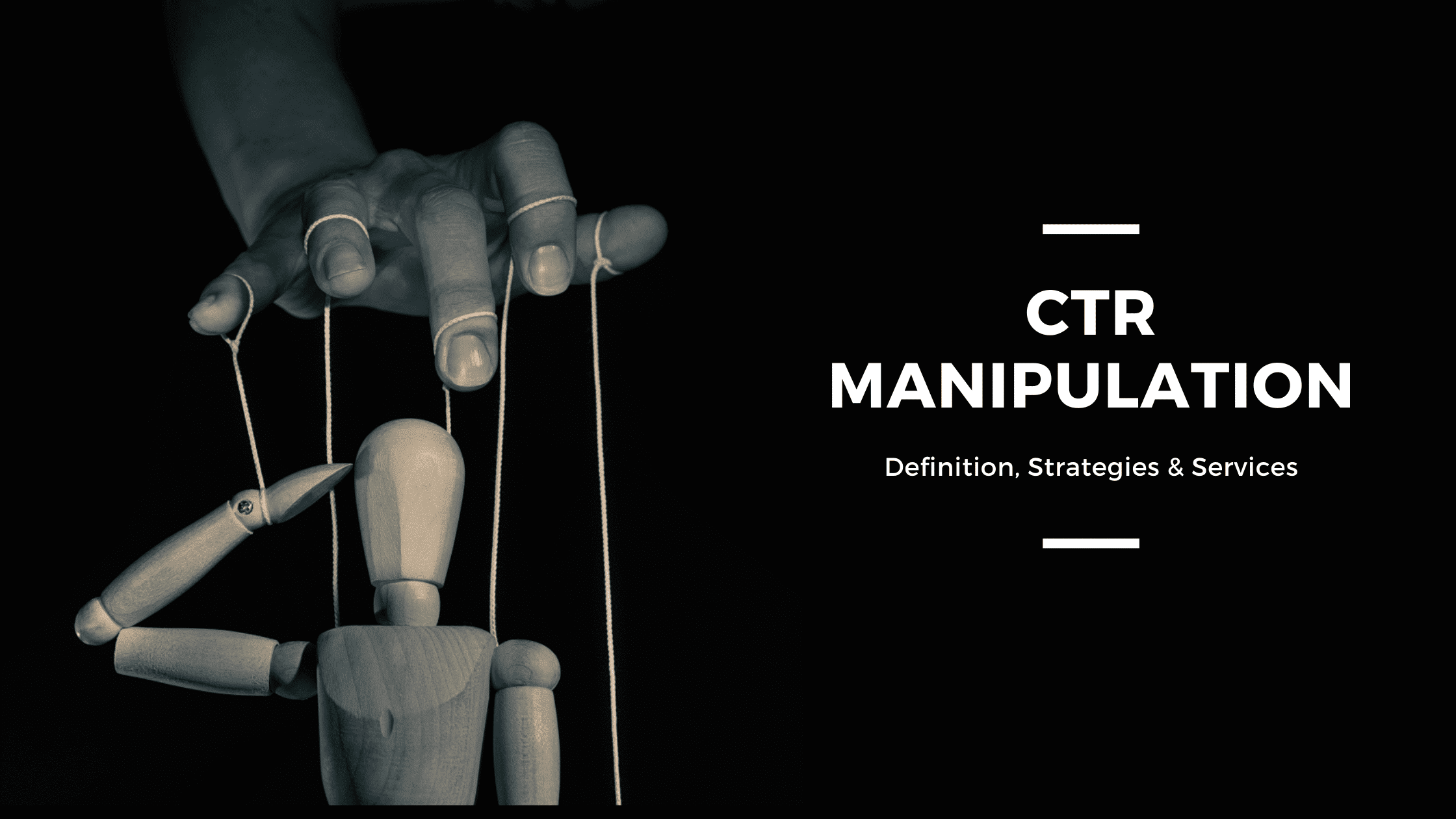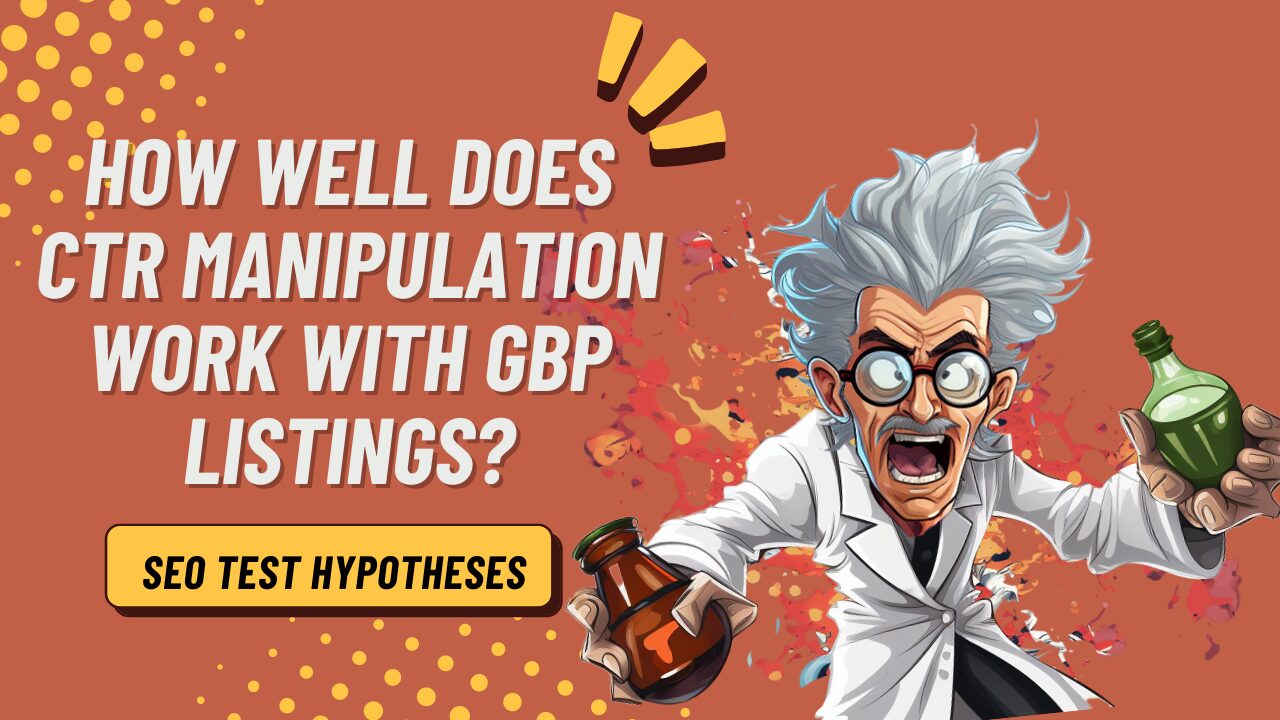Enhancing Organic Click-Through Fees With CTR Manipulation
The optimization of natural click-through prices (CTR) is a nuanced undertaking that pivots on comprehending both individual psychology and reliable material presentation. The landscape is rife with misconceptions and oversimplifications regarding what really drives CTR.
Comprehending Click-Through Rates
Recognizing click-through prices (CTR) is crucial for evaluating the performance of online advertising approaches. CTR measures the percentage of individuals who click on a certain link or ad contrasted to the complete variety of users who view it. A greater CTR shows that the material is engaging and relevant to the target market, while a reduced CTR might indicate a demand for optimization.
To determine CTR, split the variety of clicks by the number of impacts and multiply by 100. As an example, if an advertisement receives 300 clicks out of 10,000 perceptions, the CTR would certainly be 3%. This metric is critical for examining numerous components of digital marketing, consisting of seo (SEARCH ENGINE OPTIMIZATION), e-mail projects, and social media advertising.
Additionally, examining CTR aids online marketers recognize which methods yield the very best outcomes and which call for refinement. By concentrating on improving CTR, organizations can improve their content's presence and efficiency, causing boosted web traffic and prospective conversions. Understanding the subtleties of CTR is foundational for any marketing professional aiming to optimize their on-line presence and maximize roi (ROI)

The Psychology of Individual Actions
Individual actions is substantially affected by emotional elements that dictate just how people communicate with online material. Recognizing these factors is vital for maximizing click-through prices (CTR) in organic search outcomes. Cognitive prejudices, such as the anchoring effect, play an important role fit users' understandings. When individuals experience information, their initial impacts can heavily influence their subsequent judgments concerning importance and integrity.
Emotional actions additionally considerably impact user actions. Content that resonates mentally can trigger a feeling of urgency or interest, motivating individuals to click. In addition, social proof-- such as individual reviews or ratings-- can enhance depend on and motivate engagement, as individuals frequently aim to the behaviors of others to inform their very own choices.
Additionally, the principle of shortage can drive clicks - CTR Manipulation Service. Limited-time offers or unique content develop an anxiety of losing out (FOMO), compelling users to act promptly. Comprehending these psychological chauffeurs allows online marketers to create more engaging content that reverberates with their target audience
Effective CTR Manipulation Methods
Leveraging emotional insights can dramatically enhance click-through rates (CTR) through targeted adjustment strategies. Among the most efficient approaches is the use of compelling headings that stimulate curiosity or seriousness. Wording titles as questions or integrating numbers can attract even more focus, motivating individuals to click.
Another technique entails maximizing meta summaries to create a feeling of relevance and immediacy. By clearly describing the advantages or services offered in the content, you can engage potential readers and convince them to click. Furthermore, making use of power words-- such as "exclusive," "verified," or "cost-free"-- can improve the appeal of your content.
Aesthetic components likewise play a critical function. Incorporating appealing pictures or thumbnails can attract users in and enhance CTR. A/B testing different visuals can aid determine which images resonate finest with your target market.
Last but not least, making sure that your content guarantees deliverable value leads to greater CTR. They are more likely to engage when customers regard that clicking will certainly offer them with significant insights or options. By employing these methods thoughtfully, marketing experts can efficiently adjust CTR to their benefit while maintaining ethical standards.
Common Myths Regarding CTR
A number of misunderstandings border click-through prices (CTR) that can lead marketers to make illinformed decisions. While a high CTR suggests that even more individuals are clicking, it does not guarantee sales or conversions.
An additional usual belief is that CTR is an isolated metric. In truth, CTR must be assessed combined with other efficiency indicators, such as bounce rate and conversion rate, to get an all natural view of campaign success.
Additionally, some marketing professionals think that maximizing for CTR alone suffices. However, concentrating specifically on CTR can cause clickbait techniques that might bring in clicks but fall short to engage users meaningfully. This method can hurt brand name online reputation and lead to reduced retention rates
Finally, there is a notion that CTR methods are universally effective. The fact is that ideal CTR methods can vary substantially throughout industries and target market, requiring customized methods for various market segments. Recognizing these misconceptions is crucial for developing effective CTR strategies that line up with overarching advertising and marketing objectives.
Measuring CTR Success
Although high click-through prices (CTR) can suggest effective this website involvement with material, determining their true success requires a detailed evaluation of numerous variables. First, it is vital to comprehend the context in which the CTR is attained. For circumstances, a high CTR on a deceptive title might not equate to purposeful involvement or conversions, eventually showing inadequately on the brand name's reputation.
Second, reviewing the resource of Get More Info website traffic is important. Organic traffic from internet search engine can signify a durable material technique, while clicks from pointless sources may suggest a lack of targeting. Additionally, gauging the subsequent individual habits is important; examining metrics such as bounce price, time invested on page, and conversion prices can provide much deeper insights into the quality of the interaction initiated by the CTR.

Verdict

The optimization of organic click-through rates (CTR) is a nuanced undertaking that pivots on recognizing both customer psychology and efficient material discussion. CTR gauges the portion of users who click on a particular web link or ad contrasted to the complete number of individuals who like this see it. A greater CTR suggests that the web content is engaging and pertinent to the target audience, while a reduced CTR may signify a need for optimization.
Concentrating exclusively on CTR can lead to clickbait tactics that might attract clicks yet fail to involve users meaningfully. Additionally, gauging the subsequent customer habits is essential; evaluating metrics such as bounce rate, time spent on web page, and conversion prices can supply much deeper insights into the top quality of the engagement initiated by the CTR.